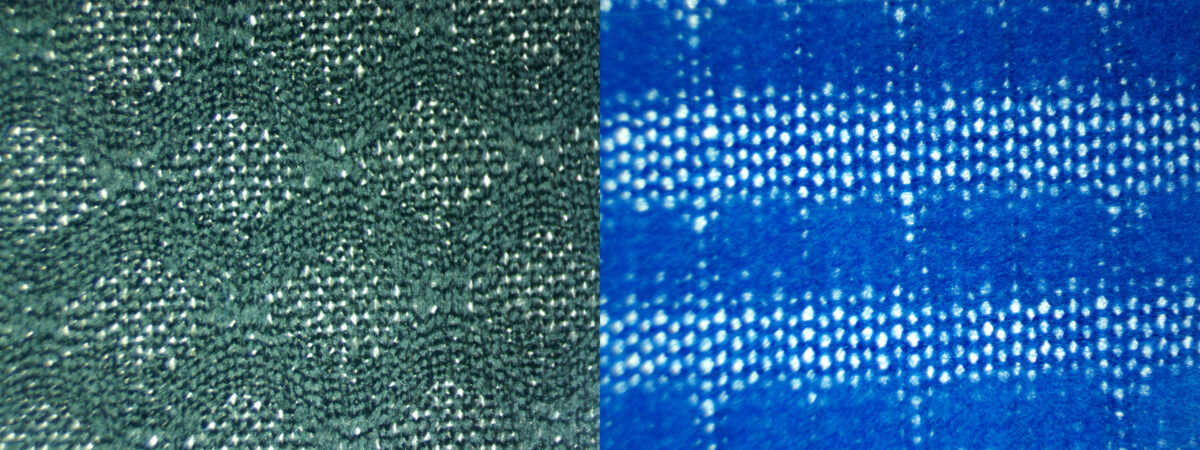Introduction
I’ve been wondering whether the Patagonia Capilene Thermal Weight base layer was really warmer than the Patagonia Capilene Midweight base layer. All we know about these popular base layers is that the Thermal Weight is about 1/3 more costly and similar in weight. However, there is much more to base layer performance than warmth and cost.
There is also the issue of moisture management to be concerned about: how well does the base layer help move moisture from the skin surface to the environment. To understand moisture management, we need to know how well the fabrics support wetting, wicking, and drying. When trying to dump excess heat, we need information on air permeability performance – whether ventilation is available or whether air can circulate through the fabric to the skin.
In this article, we measure all of these performance parameters. We find that these two base layers offer very different characteristics. Which is superior? This article will answer these questions by building on the concepts introduced in my past three base layer articles. I recommend reviewing the first two to understand fundamental concepts of wicking and base layer performance, and the third to see those concepts illustrated.
Review Stephen Seeber’s past work on base layers to get more out of this article and better understand the testing methods used.
- By the Numbers: Do Moisture-wicking Fabrics Work?
- By the Numbers: Why is My Base Layer Soaked?
- By the Numbers: Testing the Performance of Mountain Hardware AirMesh Garments
- catch up on the entire By the Numbers series here
Summary of Results
The Patagonia Capilene Thermal Weight is about twice as warm as the Patagonia Capilene Midweight. However, the Capilene Thermal Weight is not all that warm; after all, it is a base layer. To clarify, consider the following: The Capilene Thermal Weight (7 ounces / 199 g) is about 27% of the warmth of a Patagonia Micro Puff Jacket (9 ounces / 256 grams). The Capilene Midweight (7 ounces / 202 grams) is about 14% of the warmth of a Micro Puff. The R-value to weight ratio (R/ounces) of the Micro Puff is about 0.1. The same ratio for Capilene Thermal Weight and Capilene Midweight is 0.04 and 0.02. The Micro Puff is 250% more efficient for warmth than the Capilene Thermal Weight and 500% more efficient for warmth than the Capilene Midweight. As I have written, a base layer is not a great way to add warmth.
Moisture management performance varies substantially for the two base layers. In short, the Capilene Thermal Weight wets unreliably and has limited capillary capacity. The Capilene Midweight uses a fast and effective wicking fabric. Of course, both base layers must dry to manage moisture effectively. When saturated, both base layers hold similar quantities of water, dry at similar rates, and exhibit nearly identical total drying times.
The Capilene Midweight has the potential for better moisture management performance than the Capilene Thermal Weight. Of course, drying conditions must support that wicking performance. If drying conditions are inadequate, both garments can become saturated, and skin can remain wet. At that point, the thermal performance of either garment will be drastically reduced.
Reliable performance for either layer will require adequate ventilation through layers or adequate control of exertion level to remain warm and dry.
In our Forums: what is the Backpacking Light membership saying about Patagonia Capilene and other base layers?
Test Results
Within the following sections, qualitative and quantitative data points from testing are used to analyze the visual characteristics, physical characteristics, air permeability, water saturation, and drying and wicking of the fabric of the Patagonia Capilene Midweight and Patagonia Capilene Thermal Weight base layers.
Member Exclusive
A Premium or Unlimited Membership* is required to view the rest of this article.
* A Basic Membership is required to view Member Q&A events




Home › Forums › By The Numbers: Patagonia Capilene Thermal Weight vs. Patagonia Capilene Midweight Performance Comparison